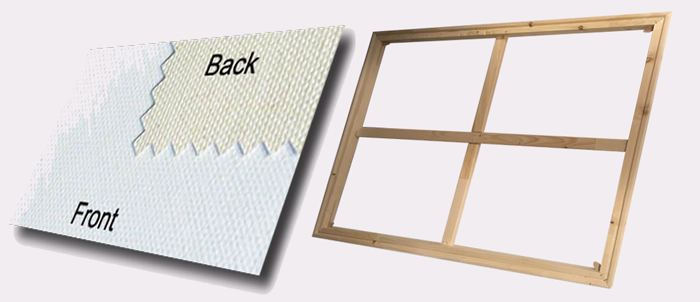Introduction: Joining techniques play a crucial role in the strength and stability of gallery wrap stretcher bars. In this article, we explore innovative methods and advancements in joining techniques that enhance the durability and longevity of these frames.
- Reinventing Traditional Joinery: While traditional joining techniques like mortise and tenon joints and lap joints have served the art industry well, new innovations are emerging. For example, advanced adhesives and bonding agents are being utilized to provide superior strength and eliminate the need for visible fasteners. CNC (Computer Numerical Control) technology enables precise machining and shaping of stretcher bar components, resulting in seamless and precise joinery. These innovative approaches ensure optimal structural integrity and allow artists to push the boundaries of their artwork.
- Metal Reinforcement Systems: In recent years, metal reinforcement systems have gained popularity in stretcher bar manufacturing. Metal brackets or plates are strategically embedded within the wooden frame, providing additional strength and stability. These reinforcement systems are particularly beneficial for large-scale artworks or installations where increased support is required. The combination of wood and metal creates a robust and reliable structure that can withstand the tension and weight of stretched canvases over time.
- Interlocking Joinery Techniques: Interlocking joinery techniques offer a fresh approach to stretcher bar construction. These methods involve intricate interlocking mechanisms or slots that securely connect the frame components without the need for fasteners. By utilizing precise cuts and connections, interlocking joinery provides a seamless and visually pleasing aesthetic while maintaining structural integrity. These techniques allow for easy disassembly and reassembly, making them ideal for artists who frequently transport or store their artwork.
- Hybrid Joining Methods: Hybrid joining methods combine traditional and innovative techniques to create robust stretcher bars. For example, a combination of mortise and tenon joints with hidden metal fasteners can offer the best of both worlds—strength, stability, and a clean appearance. Hybrid methods allow manufacturers to leverage the benefits of different joining techniques, resulting in reliable and visually appealing stretcher frames that withstand the test of time.
Conclusion: Innovations in joining techniques for gallery wrap stretcher bars have revolutionized the way these frames are constructed. Through the use of advanced adhesives, metal reinforcement systems, interlocking joinery, and hybrid methods, artists and manufacturers can create durable and visually striking stretcher bars that provide the necessary support for artwork, pushing the boundaries of artistic expression.
